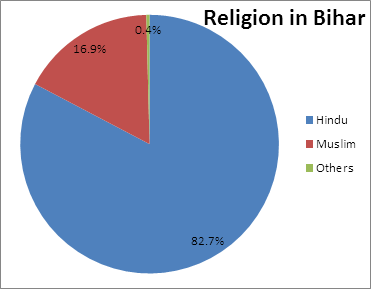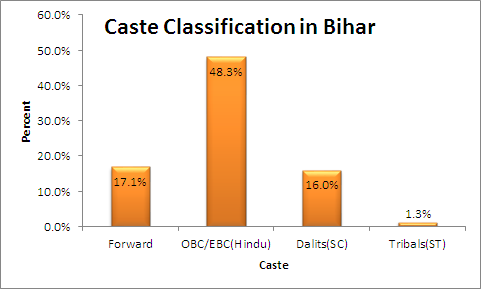Patna, Bihar: As 2019 parliamentary elections are approaching, the focus of all political parties and media outlets are now on Hindi Belt states of India, specially UP and Bihar. While every media outlet is busy providing opinion poll on which party is likely to get how many number of seats. We here will take a look about how all parties performed in last parliamentary election from Bihar state. The 2014 parliamentary election were held phase wise and elections in Bihar were held between 10th April 2014 to 12th May 2014 and the results were declared on 16th May 2014. As expected Narendra Modi led NDA swept the elections with BJP winning 282 seats alone. In Bihar also, NDA performed very well winning 31 seats out of 40 seats.

(Note: One seat was won by NCP’s Tariq Anwar from Katihar constituency.)
Although 2014 elections were all about Modi and misrule of Congress, no one can deny the role of caste based alliance with regional parties. If we take a close look on demographics of Bihar, we will be able to understand it slightly better.
Bihar like any other Hindi Belt State has Muslims as largest minority group with almost minimal number of other minorities including Sikhs,Christians, Jains, Bodhs etc. and Muslims will vote any party which is in direct competition with BJP.

Coming to Caste voting patters, it is very complicated here. Every major caste has its own leader and party. For example it is RJD for Yadavs, JD(U) for Kurmis, RLSP for Koeris and so on. Forward caste votes are not as concentrated as OBC’s but majority of forward caste votes are generally go to BJP’s pocket. As far as SC’s and Dalits are concerned they have got their own leader in form of LJP’s Ram Vilas Paswan.

Further, this time around also the party which is able to stitch right alliance at right constituency is certainly going to have an edge over the other because India unlike other western democracy is a multi-party democracy.
Disclaimer: The opinion expressed and facts presented in this article can be varied depending upon person to person. Generalizing anything is not good but there are lots of “not so good” in Indian politics also.

